| Listing 1 - 10 of 34 | << page >> |
Sort by
|
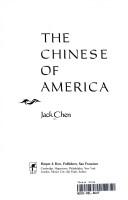
ISBN: 0062501402 Year: 1980 Publisher: San Francisco Harper and Row
Abstract | Keywords | Export | Availability | Bookmark
 Loading...
Loading...Choose an application
- Reference Manager
- EndNote
- RefWorks (Direct export to RefWorks)
Book
ISBN: 0877014914 0877015805 Year: 1988 Publisher: San Francisco Chronicle Books
Abstract | Keywords | Export | Availability | Bookmark
 Loading...
Loading...Choose an application
- Reference Manager
- EndNote
- RefWorks (Direct export to RefWorks)
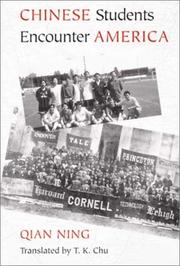
ISBN: 0295981806 0295981814 9780295803548 0295803541 9780295981802 9780295981819 Year: 2002 Publisher: Seattle University of Washington Press
Abstract | Keywords | Export | Availability | Bookmark
 Loading...
Loading...Choose an application
- Reference Manager
- EndNote
- RefWorks (Direct export to RefWorks)
Looming large in these personal stories is the legacy of China's three decades of social and political turbulence following the Communist revolution in 1949 and America's dizzying abundance of material goods and personal freedom. This title appealed in China to those who had studied abroad, those who dreamed of doing so, and those who wanted a glimpse of the real America. This English-language edition allows American readers to see their country through a Chinese lens. Since China reopened to the West in the late 1970s, several hundred thousand Chinese students and scholars have travelled abroad for advanced education, primarily to the United States. Based on interviews conducted while the author studied journalism and taught Chinese literature at the University of Michigan from 1989 to 1995, this volume tells the stories of students from a variety of backgrounds. After describing the history of Chinese students in America - from Yung Wing, who graduated from Yale in 1854, to the post-Cultural Revolution generation - Qian presents the experience of Chinese students today through anecdotes ranging from students' obsession with obtaining Green Cards and their struggles to support themselves, to their marital crises.
Chinese students --- S11/1120 --- S14/0620 --- Students --- China: Social sciences--Migration and emigration: U.S.A. and Canada (incl. Hawaï) (whatever timeperiod) --- China: Education--Chinese students/scholars abroad: since 1979 --- Hojere uddannelser --- Studerende --- International uddannelse --- Uddannelse --- Kina
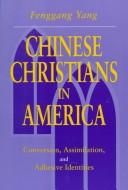
ISBN: 0271019174 0271019166 0271031239 Year: 1999 Publisher: University Park Pennsylvania State university press
Abstract | Keywords | Export | Availability | Bookmark
 Loading...
Loading...Choose an application
- Reference Manager
- EndNote
- RefWorks (Direct export to RefWorks)
Christianity has become the most practiced religion among the Chinese in America, but very little solid research exists on Chinese Christians and their churches. This book is the first to explore the subject from the inside, revealing how Chinese Christians construct and reconstruct their identity—as Christians, Americans, and Chinese—in local congregations amid the radical pluralism of the late twentieth century. Today there are more than one thousand Chinese churches in the United States, most of them Protestant evangelical congregations, bringing together diasporic Chinese from diverse origins—Taiwan, Hong Kong, mainland China, and Southeast Asian countries. Fenggang Yang finds that despite the many tensions and conflicts that exist within these congregations, most individuals find ways to creatively integrate their evangelical Christian beliefs with traditional Chinese (most Confucian) values. The church becomes a place where they can selectively assimilate into American society while simultaneously preserving Chinese values and culture.Yang brings to this study unique experience as both participant and observer. Born in mainland China, he is a sociologist who converted to Christianity after coming to the United States. The heart of this book is an ethnographic study of a representative Chinese church, located in Washington, D. C., where he became a member. Throughout the book, Yang draws upon interviews with members of this congregation while making comparisons with other churches throughout the United States. Chinese Christians in America is an important addition to the literature on the experience of ";new"; immigrant communities.
Chinese Americans --- S11/1120 --- S13B/0200 --- Chinese --- Ethnology --- Religion --- China: Social sciences--Migration and emigration: U.S.A. and Canada (incl. Hawaï) (whatever timeperiod) --- China: Christianity--General works --- Chinese Christian Church of Washington, D.C. (Washington, D.C.)
Book
ISBN: 0520083377 Year: 1994 Publisher: Berkeley ; Los Angeles ; London University of California Press
Abstract | Keywords | Export | Availability | Bookmark
 Loading...
Loading...Choose an application
- Reference Manager
- EndNote
- RefWorks (Direct export to RefWorks)
S11/1120 --- Chinese Americans --- -Chinese Americans --- Chinese --- Ethnology --- China: Social sciences--Migration and emigration: U.S.A. and Canada (incl. Hawaï) (whatever timeperiod) --- Legal status, laws, etc --- -History --- -China: Social sciences--Migration and emigration: U.S.A. and Canada (incl. Hawaï) (whatever timeperiod) --- History --- Legal status, laws, etc. --- Chinese Americans - Legal status, laws, etc. - History.
Book
ISBN: 9780674052536 Year: 2014 Publisher: Cambridge, Mass. London Harvard University Press
Abstract | Keywords | Export | Availability | Bookmark
 Loading...
Loading...Choose an application
- Reference Manager
- EndNote
- RefWorks (Direct export to RefWorks)
Americans --- Chinese --- S11/1120 --- S09/0600 --- S02/0310 --- Ethnology --- Yankees --- History. --- China: Social sciences--Migration and emigration: U.S.A. and Canada (incl. Hawaï) (whatever timeperiod) --- China: Foreign relations and world politics--China and USA: general and before 1949 --- China: General works--Intercultural dialogue --- United States --- China --- Relations --- History --- 19th century
Book
Abstract | Keywords | Export | Availability | Bookmark
 Loading...
Loading...Choose an application
- Reference Manager
- EndNote
- RefWorks (Direct export to RefWorks)
S11/1120 --- S14/0620 --- S16/0470 --- China: Social sciences--Migration and emigration: U.S.A. and Canada (incl. Hawaï) (whatever timeperiod) --- China: Education--Chinese students/scholars abroad: since 1979 --- China: Literature and theatrical art--Modern tales, short stories, prose: texts and translations --- S16/0430 --- China: Literature and theatrical art--Modern novels: texts and translations
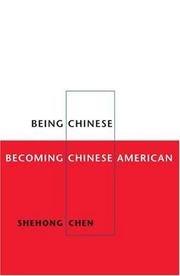
ISBN: 0252027361 0252073894 Year: 2002 Publisher: Urbana University of Illinois press
Abstract | Keywords | Export | Availability | Bookmark
 Loading...
Loading...Choose an application
- Reference Manager
- EndNote
- RefWorks (Direct export to RefWorks)
Chinese Americans --- Transnationalism. --- Cultural assimilation. --- Ethnic identity. --- Social conditions --- Transnationalism --- S11/1120 --- Trans-nationalism --- Transnational migration --- International relations --- Chinese --- Ethnology --- Cultural assimilation --- Ethnic identity --- China: Social sciences--Migration and emigration: U.S.A. and Canada (incl. Hawaï) (whatever timeperiod) --- China --- United States --- Relations
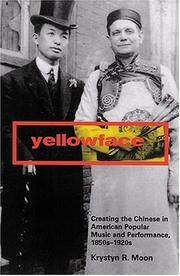
ISBN: 1283591928 9786613904379 0813541220 9780813541228 0813535417 9780813535418 9780813535067 0813535069 9780813535074 0813535077 Year: 2005 Publisher: New Brunswick, N.J. Rutgers University Press
Abstract | Keywords | Export | Availability | Bookmark
 Loading...
Loading...Choose an application
- Reference Manager
- EndNote
- RefWorks (Direct export to RefWorks)
Music and performance provide a unique window into the ways that cultural information is circulated and perceptions are constructed. Because they both require listening, are inherently ephemeral, and most often involve collaboration between disparate groups, they inform cultural perceptions differently from literary or visual art forms, which tend to be more tangible and stable. In Yellowface, Krystyn R. Moon explores the contributions of writers, performers, producers, and consumers in order to demonstrate how popular music and performance has played an important role in constructing Chinese and Chinese American stereotypes. The book brings to life the rich musical period of the late nineteenth and early twentieth centuries. During this time, Chinese and Chinese American musicians and performers appeared in a variety of venues, including museums, community theaters, and world's fairs, where they displayed their cultural heritage and contested anti-Chinese attitudes. A smaller number crossed over into vaudeville and performed non-Chinese materials. Moon shows how these performers carefully navigated between racist attitudes and their own artistic desires. While many scholars have studied both African American music and blackface minstrelsy, little attention has been given to Chinese and Chinese American music. This book provides a rare look at the way that immigrants actively participated in the creation, circulation, and, at times, subversion of Chinese stereotypes through their musical and performance work.
Chinese Americans --- Popular music --- Chinese --- Ethnology --- Music --- History and criticism. --- S18/0200 --- S11/1120 --- Music&delete& --- History and criticism --- China: Music and sports--Music and musical instruments --- China: Social sciences--Migration and emigration: U.S.A. and Canada (incl. Hawaï) (whatever timeperiod)
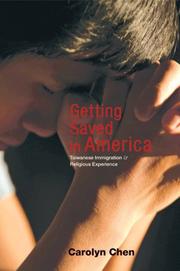
ISBN: 1282157418 9786612157417 1400824176 9781400824175 0691119627 9780691119625 0691164665 9781282157415 Year: 2008 Publisher: Princeton, NJ Princeton University Press
Abstract | Keywords | Export | Availability | Bookmark
 Loading...
Loading...Choose an application
- Reference Manager
- EndNote
- RefWorks (Direct export to RefWorks)
What does becoming American have to do with becoming religious? Many immigrants become more religious after coming to the United States. Taiwanese are no different. Like many Asian immigrants to the United States, Taiwanese frequently convert to Christianity after immigrating. But Americanization is more than simply a process of Christianization. Most Taiwanese American Buddhists also say they converted only after arriving in the United States even though Buddhism is a part of Taiwan's dominant religion. By examining the experiences of Christian and Buddhist Taiwanese Americans, Getting Saved in America tells "a story of how people become religious by becoming American, and how people become American by becoming religious." Carolyn Chen argues that many Taiwanese immigrants deal with the challenges of becoming American by becoming religious. Based on in-depth interviews with Taiwanese American Christians and Buddhists, and extensive ethnographic fieldwork at a Taiwanese Buddhist temple and a Taiwanese Christian church in Southern California, Getting Saved in America is the first book to compare how two religions influence the experiences of one immigrant group. By showing how religion transforms many immigrants into Americans, it sheds new light on the question of how immigrants become American.
Buddhism. --- Christianity. --- Conversion. --- Taiwanese Americans --- Buddha and Buddhism --- Lamaism --- Ris-med (Lamaism) --- Religions --- Christianity --- Church history --- Religious conversion --- Psychology, Religious --- Proselytizing --- Ethnology --- Taiwanese --- Religion. --- Buddhism --- Conversion --- S11/1120 --- S26/0900 --- Religion --- China: Social sciences--Migration and emigration: U.S.A. and Canada (incl. Hawaï) (whatever timeperiod) --- Taiwan--Religion
| Listing 1 - 10 of 34 | << page >> |
Sort by
|

 Search
Search Feedback
Feedback About UniCat
About UniCat  Help
Help News
News